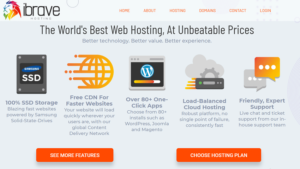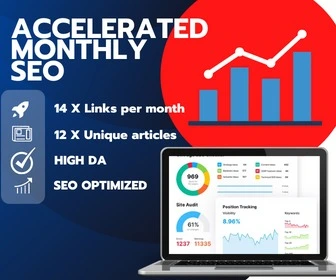Founded in 1982, and with headquarters in San Jose, California, the company offers Adobe Analytics as part of the Adobe’s Marketing Cloud product range Adobe Analytics was formerly known as Omniture SiteCatalyst. But after the 2009 acquisition of Omniture (a web analytics company Visual Sciences, formerly WebSideStory), the software was rebranded SiteCatalyst before becoming Adobe Analytics in 2013. Still, this tool can work separately from the package range.
Adobe Analytics is a tool for detailed segmentation and applying real time analytics across all marketing channels, revealing high value audience and powering business with customer intelligence. The software aids with improving the customer engagement through apps and location marketing, grasping the customer’s journey over multiple channels, different touch points by measuring the true impact of marketing campaigns and ultimately provide predictive intelligence.
The company itself, with around 400 employers, is dependent on 90% revenue income from its software, and 10% from services such as analytics support and hands-on implementation rendered. The benefit of this company is that they invested in their service development as well, and not just the software. Their virtual analyst is an example, adding clients to understand the software better. But it is successful with financial services, retail, and technology. Clients include Lenovo, Starwood, Skullcandy, Scottrade, National Football League (NFL), and Computer Sciences Corporation (CSC). A negative about this tool is that clients will need to import user-level media data from providers. Still, it provides an effective rule-based and algorithmic Multitouch Attribution solution.
When we mention multi-touch points there are some primary touch points that are key for measurement. They include:
- Mentions: If people are talking about you, not just to you, that’s a good thing. Successful brands capitalize on this and engage with people who are talking about them. Even negative brand mentions can be turned around if you handle the conversation correctly.
- Clicks: Whether someone is clicking your link or clicking “Like,” that person is saying your content was good enough for someone to take the time to engage with it.
- Comments or Replies: A large volume of people taking the time to comment and engage in real conversation online speaks to how trusted and personal your brand is and how it is connecting with consumers.
- Shares: People share your brand and content in a variety of ways, all of which are typically trackable. This is really the most valuable form of engagement, because when your audience shares your content, they become advocates for your brand in that process… introducing you to a new audience.
Unlike outdated models that uses last interaction or first interaction, Adobe Analytics follows a multi touch model.
Firstly you should understand that Last Interaction: Also known as “last click,” this model awards attribution to the last touchpoint between your company and the customer. And, First Interaction: The reverse of the Last Interaction model. This method gives full credit to the touchpoint that launched customer on the sales journey with your company.
Adobe Analytics for Attribution is based on different models, namely the Random Forest model, and the Logistic Regression model. The Random Forest model is an ensemble method that combines many dozens (or hundreds) of decision trees, which adds randomness into the test conditions at each node to reduce over fitting. The Logistic Regression model, although a regression model, logistic regression is used as a classifier. It maps the dependent variable onto an interval between 0 and 1 and so can be translated into a probability that the variable is in a particular class.
Adobe Analytics has the benefit that it is part of Adobe’s analytics platform, which provides a full suite of tools for web, mobile and social analytics. If one has to summarize the benefits, it could read as such:
- View real-time actionable events to enable data driven responses.
- Understanding the driving forces influencing the business anomalies.
- Score visitors on a specific variable accessing the right targets.
- Tie online & offline traffic to track the customer behavior across channels.
- Categorize individuals or groups into actionable personas based on product preferences, geo-demographics, and behavioral attributes.
- Improve cross sell opportunities & lower call center volumes by analyzing customer touch-points.
- Tie current customer behavior to past across multiple channels to serve personalized content.
- Correlate customer data to tie marketing efforts to sales.
- Assign conversion credits across all touch-points to understand marketing efforts.
The product is, therefore, a possible option to consider if you already employ products within the Adobe Analytics suite, or your budget is mostly digital, because MTA is primarily a digital attribution method.
The interface is complex and you can expect a pretty steep learning curve to get beyond basic level reporting. However, if you overlook the complexity of Adobe’s interface from what I gather the reporting potential is far greater. Ultimately you are able to get to a much more granular level and faster. In AA Workspace you are able to do pretty complex analysis at speed by just dragging and dropping. This function ultimately leads to a level of customisation GA just can’t match.
A negative of this product is that you can’t use “Time on Site” and conversion metrics in the same report makes life difficult. This is a huge problem for editorial websites where ‘time on site’ [is in itself] a conversion metric. This is a major advantage of Google Analytics over Adobe Analytics for publishers. In fact, this tool is best suited for analysts, not casual users. If you know what you’re doing, it can be extremely powerful.
A year’s subscription to Adobe Analytics can cost anywhere between $50K and $350K+ depending on the traffic to your site. Whereas Google Attribution 360 has a flat rate of $175K a year.
That all said, before switching or investing in a new tool there are 4 factors that you should take into account before making your choice. They are to assess your current technologies and tools, then to know what the knowledge that your team has, investigate the cost of the tool, and then also investigate the features and abilities of each tool.









